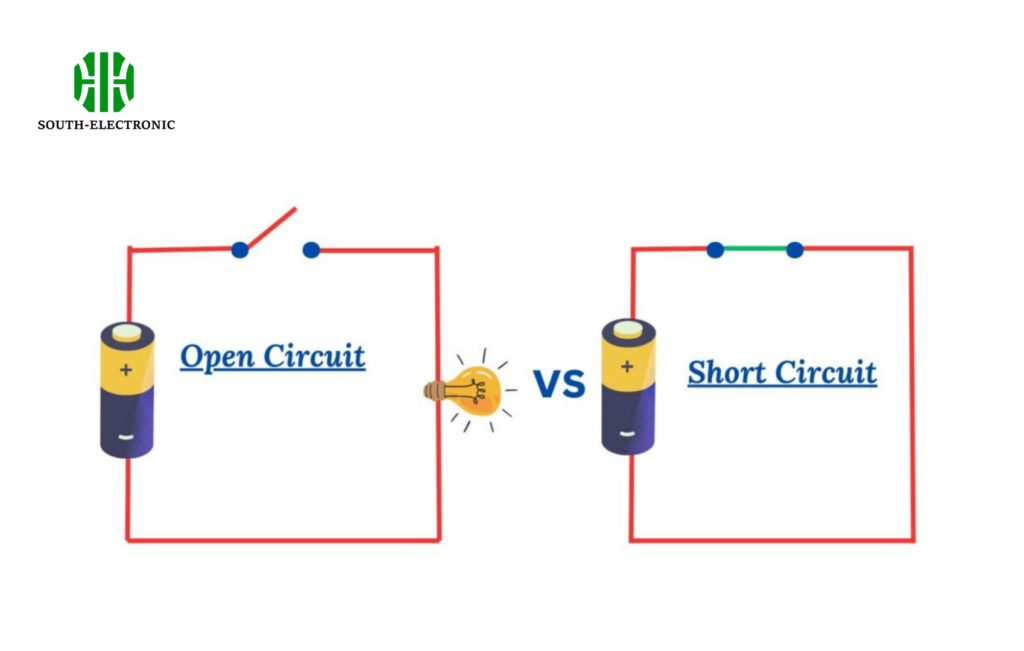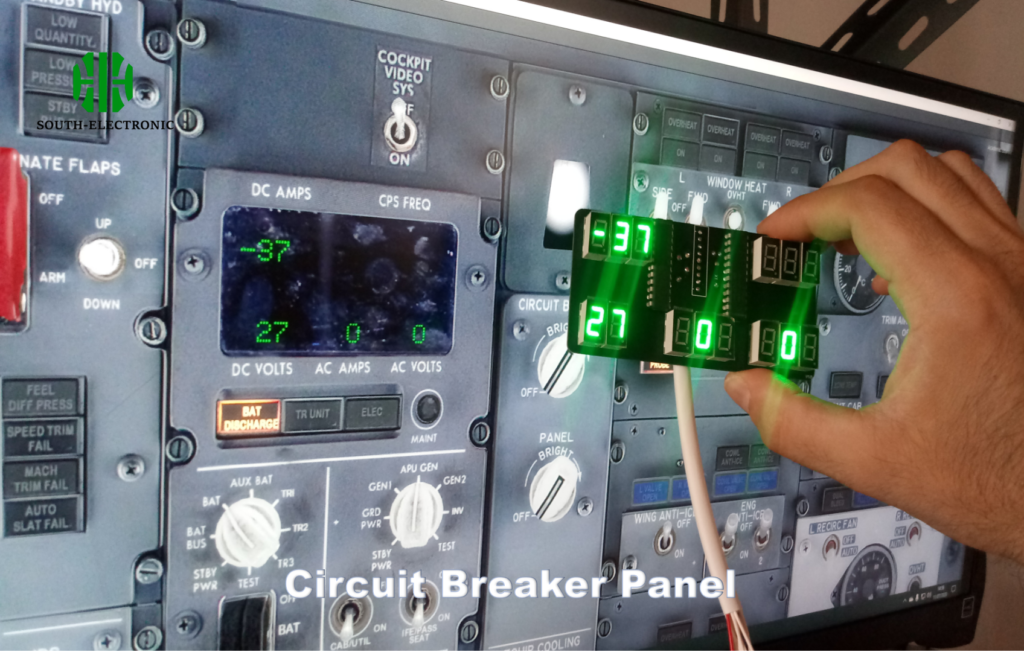Flickering lights. Burning smells. Sudden power loss. These common issues often trace back to two culprits: open circuits[^1] and short circuits[^2]. Understanding their differences could save your gadgets – and prevent electrical fires.
Open circuits break current flow (like a turned-off switch), while short circuits create dangerous current surges (like a crossed live wire). Identifying which you’re dealing with determines whether you need wire repairs or emergency shutdowns.
Both issues disrupt power flow but require different solutions. Misdiagnosing them wastes time and increases risks. Let me walk you through visual identification[^3], diagnostic tools, repair steps, and prevention strategies I’ve used in 12 years of appliance repair work.
How Can You Visually Identify an Open vs Short Circuit?
Your eyes often spot trouble before meters do. Last Tuesday, a client thought their dead outlet needed rewiring. Then we found chewed insulation – classic visual clues told the real story.
Look for physical breaks (open circuits) or melted/burned areas (shorts). Intact but non-working components suggest opens; tripped breakers or scorch marks signal shorts.
)
Key Identification Markers
| Feature | Open Circuit | Short Circuit |
|---|---|---|
| Visible Damage | Broken wires, loose connections | Melted insulation, burnt spots |
| Power Behavior | Complete power loss | Tripped breakers, sparks |
| Component Feel | Cold components | Hot components |
| Common Locations | Switch contacts, wire joints | Pinched wires, water exposure |
Smell tests help too. Open circuits lack distinctive odors. Short circuits often smell like burning plastic from overheating insulation. Always check visible wiring before testing live circuits.
What Tools Do I Need to Diagnose Circuit Failures?
My toolbox holds $800 multimeters, but you don’t need pro gear. Last month, a teenager found her lamp issue with just a $5 voltage tester from Walgreens.
Start with a multimeter for voltage checks and continuity tests. Add insulated gloves and a non-contact voltage detector for safe live circuit testing.
)
Essential Diagnostic Kit
| Tool | Purpose | Budget Option |
|---|---|---|
| Digital Multimeter[^4] | Measures voltage/continuity | AstroAI AM33D ($25) |
| Voltage Tester[^5] | Checks live circuits safely | Klein Tools NCVT-1 ($20) |
| Insulated Screwdrivers | Safe component access | HDX Set ($15) |
| Thermal Camera | Finds overheating (optional) | Seek Compact ($199) |
Test open circuits by checking continuity – a broken path won’t complete the circuit. For shorts, measure resistance between conductors; near-zero ohms indicates dangerous current paths.
What Are Step-by-Step Fixes for Open Circuits?
I once fixed a car stereo open circuit using just electrical tape – temporary solutions work, but permanent fixes prevent repeat issues. Let’s break down professional repair methods.
1. Locate break with multimeter
2. Cut damaged section
3. Strip and join wires
4. Seal with solder/connectors
5. Insulate thoroughly

Repair Comparison
| Method | Tools Needed | Durability | Skill Level |
|---|---|---|---|
| Twist-on Connectors | Pliers, wire strippers | 2 years | Beginner |
| Soldering[^6] | Soldering iron | 5+ years | Intermediate |
| Crimp Terminals | Crimping tool | 3 years | Beginner |
Always test repairs under load. A lamp working during testing might fail when drawing full current. For critical systems, use redundant connections or commercial splice kits.
How Do I Safely Resolve Short Circuit Dangers?
Fire departments respond to 51,000 electrical fires yearly. When I detect a short, my first move isn’t repair – it’s making the area safe.
1. Cut power at breaker
2. Identify short location
3. Replace damaged components
4. Test insulation resistance[^7]
5. Gradually restore power
)
Risk Mitigation Steps
| Action | Purpose | Equipment |
|---|---|---|
| De-energize Circuit | Prevent shocks/arc flashes | Insulated gloves |
| Megger Test | Check insulation breakdown | Insulation tester |
| Moisture Control | Eliminate conductive paths | Dehumidifier/silicone gel |
| Guard Installation | Prevent physical damage | Conduit/cable protectors |
Water-damaged shorts require complete component replacement. Never just dry wires – residual contamination causes repeat shorts. For appliance shorts, consider professional rewinding or motor replacements.
Can Smart Devices Prevent Circuit Issues Before They Happen?
My smart panel[^8] caught a developing short last Christmas. The alarm woke me at 2 AM – possibly the best $300 investment I’ve made. Modern tech transforms electrical safety.
Smart breakers detect arc faults and thermal issues. Leakage current sensors spot insulation breakdown. AI analyzers predict failures from usage patterns.
)
Prevention Tech Comparison
| Device | Function | Effectiveness | Cost Range |
|---|---|---|---|
| AFCI Breakers[^9] | Detect arc faults | 85% prevention | $40-$100 |
| Thermal Cameras | Monitor component temps | 70% early detection | $200-$500 |
| Power Quality Monitors | Analyze waveform anomalies | 60% prediction | $150-$300 |
| IoT Current Sensors | Track leakage current | 75% prevention | $20-$50 each |
Combine devices for layered protection. Smart systems can automatically shed loads before overheating occurs. However, they complement – don’t replace – proper wiring and maintenance.
Conclusion
Identify opens by dead circuits and visible breaks, fix with proper splicing. Combat shorts through insulation checks and smart protection. Regular testing and modern tech keep currents flowing safely where they should.
[^1]: Understanding open circuits is crucial for diagnosing electrical issues and ensuring safety in your home.
[^2]: Learning about short circuits can help you prevent dangerous electrical fires and protect your appliances.
[^3]: Visual identification techniques can save time and enhance safety when dealing with electrical problems.
[^4]: Explore this link to understand the features and applications of a Digital Multimeter, essential for diagnosing circuit failures.
[^5]: Learn about the functionality and safety benefits of using a Voltage Tester for live circuit checks, crucial for safe repairs.
[^6]: Discover expert tips on Soldering techniques to ensure durable and reliable electrical connections in your repairs.
[^7]: Understanding insulation resistance testing can help you maintain safe electrical systems and prevent shorts and fires.
[^8]: Explore how smart panels enhance electrical safety by detecting issues early, potentially saving you from costly repairs and hazards.
[^9]: Learn about AFCI breakers and their effectiveness in preventing electrical fires, a crucial aspect of home safety.



